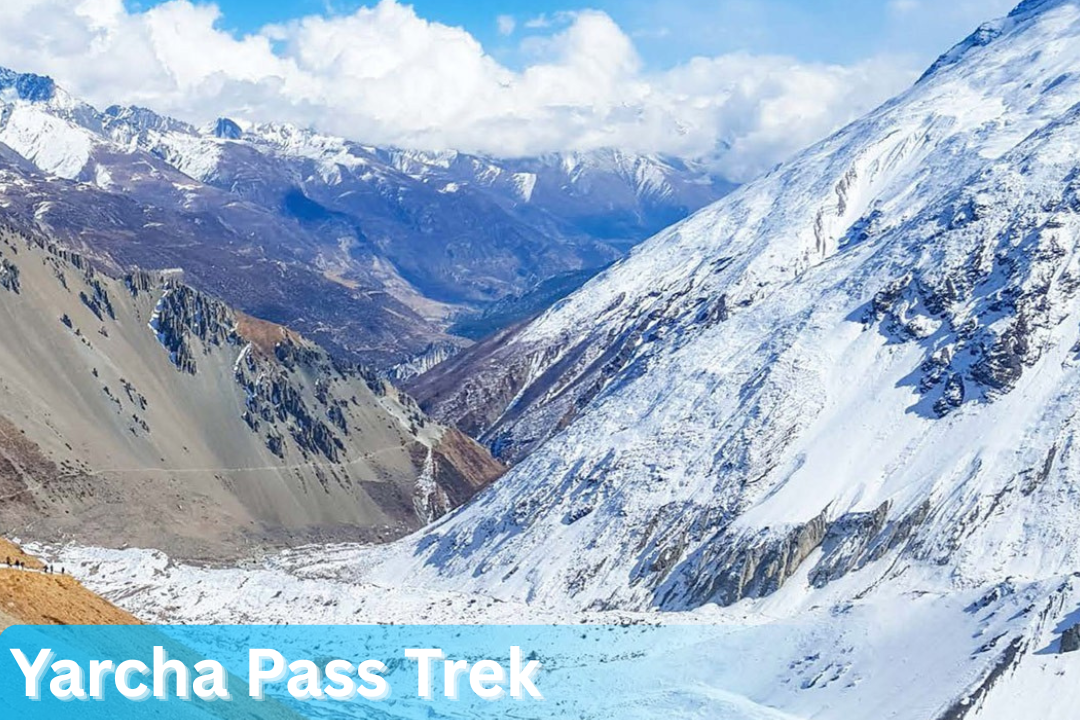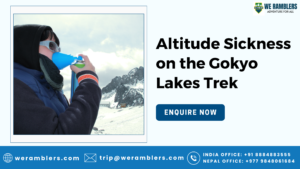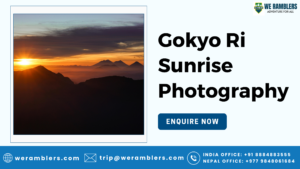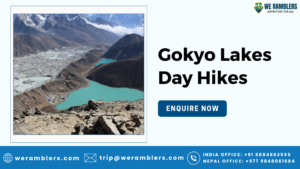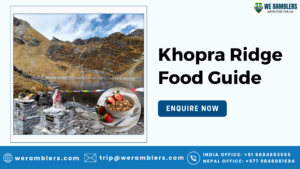Yarcha Pass Trek: Exploring One of Nepal’s Most Isolated Himalayan Crossings
Tucked deep in the wild northern reaches of Nepal, Yarcha Pass (4,800–5,000 meters) offers one of the Himalayas’ most elusive and isolated trekking experiences. This pass, positioned between the Nar Phu Valley and remote extensions toward Mustang and Tilicho, remains almost entirely untraveled, even by many seasoned Nepali trekkers.
The Yarcha Pass Trek is a true offbeat Himalayan trek — raw, challenging, and unscripted. It promises not only remarkable natural beauty but also extreme solitude, pushing adventurers to test their physical, mental, and navigational skills in an environment that feels untouched by time.
With no commercial lodges, waypoints, or reliable trails beyond Phu village, Yarcha is for serious adventurers who seek to immerse themselves in the pure wilderness of the Himalayas. Unlike busier routes such as Everest Base Camp or Annapurna Circuit, Yarcha’s appeal lies in its remoteness, the privilege of self-reliance, and the unmatched silence of Himalayan desolation.
Why Trek to Yarcha Pass?
The allure of Yarcha Pass lies in its complete departure from the typical trekking experience in Nepal. While many Himalayan routes attract hundreds of trekkers daily, here you may go days without seeing a single person beyond your own team. This is the ultimate prize for off-grid trekkers yearning for true Nepal wilderness adventure.
Few places offer such raw exposure to nature — towering peaks loom overhead, glacial valleys stretch endlessly, and the rhythmic sound of your boots becomes your only company. The Yarcha Pass Trek connects forgotten trails and unveils secret highland plateaus that feel like a personal discovery with every step.
For adventurers seeking a lesser-known Nepal trek, Yarcha delivers unparalleled satisfaction. It offers not just breathtaking views, but also the profound experience of crossing wild terrain where humans have made little imprint. The trek demands respect, preparation, and humility, rewarding those who venture here with an unmatched sense of accomplishment.
Yarcha Pass Geography and Significance
Located northwest of Phu village, Yarcha Pass forms a rugged barrier separating the Nar Phu Valley trek from more obscure Himalayan corridors leading toward Tilicho and Upper Mustang. Its terrain is harsh — composed of loose scree, glacial debris, unstable ridgelines, and razor-sharp rock outcrops.
The Yarcha to Phu trail serves as a fragile lifeline in these desolate heights, utilized occasionally by local yak herders but largely invisible to outsiders. Unlike other trails in Nepal, this one requires active route-finding, constant assessment of safety, and navigation across undefined landscapes.
Geologically, this region reveals the raw mechanics of Himalayan uplift — jagged limestone cliffs, fast-changing moraine fields, and windswept alpine tundra paint an ancient portrait of nature’s power. As one of the most remote passes in Nepal, Yarcha embodies the dramatic, evolving story of the Himalayas like few other places can.
Best Time to Trek Yarcha Pass
Timing your adventure is crucial. The best time to trek Yarcha Pass is during Nepal’s stable trekking seasons: spring (April to May) and autumn (September to November). These windows offer the clearest skies, relatively stable conditions, and tolerable temperatures for high-altitude navigation.
Unlike better-trodden trails, Yarcha is particularly vulnerable to sudden weather changes. Its position exposes trekkers to high winds, fast-forming clouds, and sudden snowfalls even in favorable months. The weather window is shorter here due to its raw exposure and absence of emergency shelters.
In spring, melting snow reveals colorful alpine flora while the towering peaks gleam with fresh white caps. Autumn offers pristine blue skies, crisp air, and unmatched clarity for panoramic views. Attempting the trek outside these windows risks dangerous snow loads in winter and treacherous landslides during monsoon.
Yarcha Pass Trek Itinerary
The following Yarcha Pass itinerary balances gradual acclimatization with efficient progress toward the pass, allowing trekkers to adapt while preparing for the remote and demanding crossing:
- Day 1: Koto (2,600m) to Meta (3,560m) – Enter Nar Phu restricted area.
- Day 2: Meta to Kyang (3,840m) – Follow narrow gorges and high cliffs.
- Day 3: Kyang to Phu (4,080m) – Acclimatize and explore ancient Buddhist culture.
- Day 4: Rest day in Phu – Prepare for wilderness, check gear, and hydrate.
- Day 5: Phu to Yarcha Base (~4,400m) – Wild camping; route-finding begins.
- Day 6: Cross Yarcha Pass (~4,900m) – Challenging ascent, reach Naar side.
- Day 7: Naar to Manang via Nar Phu to Manang route – Recovery and resupply.
Beyond Phu, trekkers must rely entirely on their own provisions. No teahouses exist past Phu village, making wild camping essential. Adding contingency days is highly recommended to account for bad weather or slower acclimatization.
For extended journeys, this itinerary can be linked to Tilicho Lake, Thorong La, or Mustang for a comprehensive Nepal wilderness adventure circuit.
Permit and Logistics
Due to its location inside the restricted Nar Phu region, trekkers must secure the Nar Phu restricted area permit. This can only be obtained via a registered Nepali trekking agency, and requires the accompaniment of a licensed guide — solo trekking without official support is strictly prohibited.
Permits are issued in Kathmandu or Pokhara and generally take 1–2 days for processing. Additional permits include the Annapurna Conservation Area Permit (ACAP). Budget extra for guide wages, insurance, transportation, porter costs, and special equipment for unsupported trekking beyond Phu.
Few guides have hands-on experience with the Yarcha Pass Trek, so choose carefully. Agencies familiar with hidden trekking routes Nepal offer will significantly increase your safety and success rates.
Yarcha Pass Trek Difficulty & Trail Conditions
This is a serious, technical trek. Beyond Phu, the trail becomes increasingly vague, often requiring trekkers to navigate rockfall zones, icy slopes, and steep ascents with no defined path. The terrain near Yarcha Pass constantly shifts due to seasonal erosion, making accurate route-finding critical.
Trekking in Nepal rarely gets this raw. Trekkers should be in excellent physical shape with advanced experience in high-altitude expeditions. Comfort using GPS, compass navigation, crampons, and ice axes is often necessary depending on seasonal snow and ice levels.
Unlike many Himalayan routes, there is little margin for error here. Poor preparation or unexpected storms could quickly escalate into serious emergencies, underscoring why Yarcha is unsuitable for novices or anyone lacking significant alpine experience.
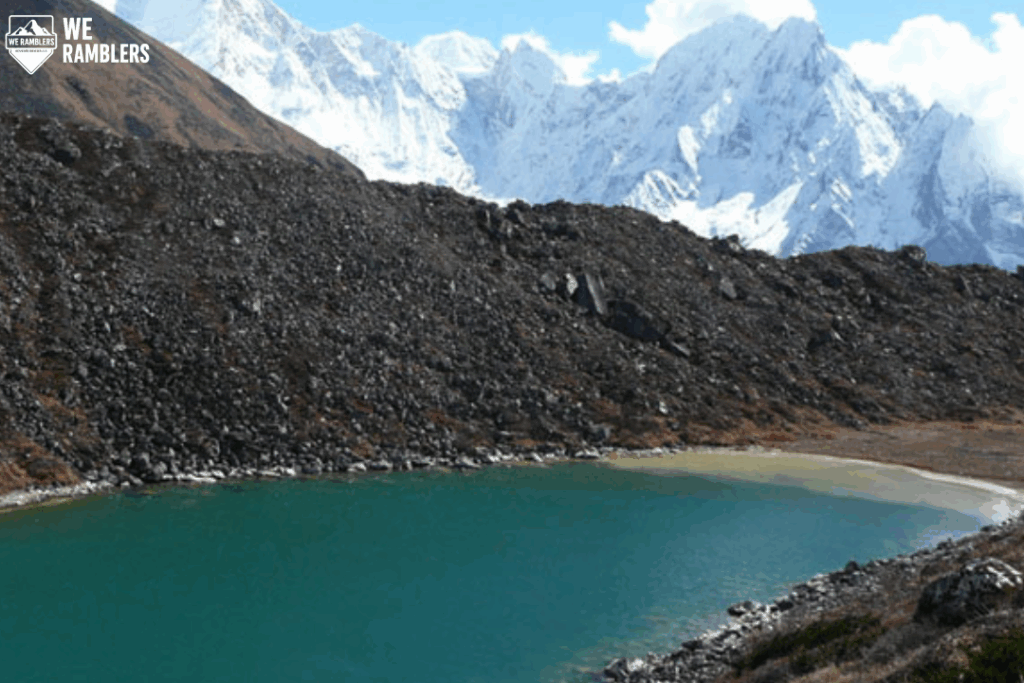
Acclimatization & Altitude Awareness
Altitude acclimatization is paramount. The rapid gain in elevation on the Yarcha Pass Trek poses real risks for Acute Mountain Sickness (AMS), which can develop suddenly without warning.
Trekkers should plan for 2–3 rest days — particularly at Phu or Meta — to adjust slowly. Hydration, adequate nutrition, and slow ascent rates are essential. Carry emergency medications such as diamox or oxygen cans, but never rely on them to ignore worsening symptoms.
Learn to recognize AMS signs: headaches, loss of appetite, dizziness, confusion, and fatigue. If symptoms persist or worsen, descend immediately. Having a guide well-versed in high-altitude medicine can make critical differences in safety.
Proactive acclimatization ensures not only health but also maximizes your ability to fully appreciate the awe-inspiring experience of high altitude trekking Nepal offers at its wildest.
Packing Essentials for Yarcha Pass Trek
Unlike Nepal’s teahouse treks, Yarcha requires full expedition-style packing. Essentials include:
- 4-season sleeping bag (-15°C minimum) & insulated tent
- High-quality cold-weather layers, down jackets & windproof outerwear
- Lightweight stove, fuel, and high-calorie food supplies for 3–4 days
- GPS, map, compass, and satellite communicator for navigation
- Comprehensive first-aid kit including altitude medications
- Power banks, solar chargers & spare batteries
- Sufficient cash — no banking facilities exist after Koto
Also pack snow gaiters, microspikes or crampons, and waterproof gear, as conditions near the pass can change unexpectedly. A lightweight emergency bivy sack can offer extra protection if bad weather delays progress.
Preparedness ensures you can fully enjoy this Nepal wilderness adventure while staying safe in its challenging isolation.
Cultural and Natural Wonders En Route
Despite its remoteness, the Yarcha Pass Trek offers rich glimpses into Himalayan culture and biodiversity. Phu village showcases ancient Tibetan-style architecture, cliffside gompas, and unique stone houses where the few remaining residents still herd yaks and practice Tibetan Buddhism.
Wildlife sightings may include blue sheep, Himalayan marmots, lammergeiers, and—on the rarest occasions—snow leopards silently stalking alpine ridges. The silence of the landscape is surreal, broken only by the crunch of snow or wind sweeping across the barren tundra.
Glacial rivers, prayer flags fluttering against towering rock walls, and the sheer scale of the Himalayas offer both spiritual and visual nourishment, making every step along these hidden trekking routes Nepal offers profoundly rewarding.
Trail Extensions and Custom Routes
The Yarcha Pass Trek is wonderfully flexible for seasoned trekkers. After crossing Yarcha, you can:
- Descend to Naar village for additional cultural immersion
- Link westward toward Tilicho Lake for dramatic high-altitude vistas
- Combine with Thorong La or Upper Mustang for a grand alpine circuit
- Follow the Nar Phu to Manang route for smoother descent and recovery
These extensions turn Yarcha into the centerpiece of a custom, multi-week expedition, offering extensive exploration of Nepal’s most rugged wilderness corridors. For those with the time, fitness, and experience, this flexibility creates an unforgettable lesser-known Nepal trek itinerary.
Who The Yarcha Pass Trek is For
The Yarcha Pass Trek is a badge of honor for self-sufficient, highly adventurous trekkers who seek the raw, untamed wilderness of Nepal. Unlike commercialized treks, Yarcha rewards solitude, preparation, and deep respect for nature’s power.
For those who dream of true high altitude trekking in Nepal, free from crowds and modern conveniences, Yarcha delivers an experience few others will ever know. It embodies the essence of hidden trekking routes Nepal still hides in its wild northern ranges.
If you seek ultimate adventure, unmatched silence, and the privilege of exploring one of Nepal’s last great wild frontiers, Yarcha Pass awaits.
Trekking with We Ramblers
For those seeking expert guidance on the Yarcha Pass Trek, We Ramblers offers customized trekking packages for extreme Himalayan adventures. With experienced guides, logistical support, and a focus on safety in remote areas, our team ensures trekkers can explore these wild terrains confidently. Our knowledge of offbeat Himalayan treks makes us an ideal partner for conquering Yarcha Pass and beyond. Get in touch today to get full trek details.

